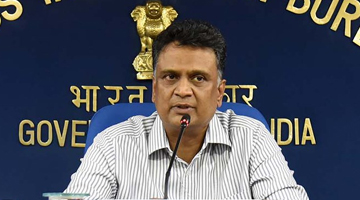I-T - Capital gains - An asset once treated as part of 'block of assets' will always remain a part of the block even if it ceases to be put to use for business in some previous years: HC
By TIOL News Service
MUMBAI, OCT 12, 2017: THE issue is - Whether, for the purpose of Section 50, an asset once treated as a part of the 'block of assets' u/s 2(11), will always remain a part of the block even if it ceases to be put to use for business in some previous years. YES is the verdict.
Facts of the case:
The Assessee, an individual, was carrying on weaving work on job basis in all her three concerns, viz. Gitanjali Silk Mills; Kalpana Silk Mills and M/s J. R. Enterprises. There were eight looms in M/s.Gitanjali Silk Mills and four each in other concerns. It was Assessee's case that the industrial gala where these looms were oprational, was purchased by Assessee for Rs.1,39,500/-. Of these two galas, the assessee sold one for Rs.6,60,000/- after thirteen year and earned profit of Rs.6,23,645/-. This profit was treated by Assessee as long term capital gain and deduction u/s 48(2) was claimed thereon. The AO however noted that Assessee had not only claimed depreciation on the gala for A.Ys 1981-82 to 1986-87 but also claimed deduction u/s 80(J) for A.Ys 1981-82 to 1985-86. He was of the view that once depreciation had been allowed, the asset would remain a business asset and the profit earned on sale of that asset would be taxed u/s 50. According to the AO, though the section was effective from 2nd November 1986, it did not state that provisions of this section would apply only to those assets where depreciation has been allowed after 1st April 1988 and in fact it referred to old act. The AO found that neither depreciation nor the written down value was shown separately for the galas, and even the claim of personal asset was not correct because the assessee had claimed society charges of Rs.62,935/- in the P&L A/c pertaining to the two galas. The AO also noted that Assessee herself had shown "profit on sale of factory gala". With these findings, the AO concluded that gain arising on sale of industrial gala was short term capital gain u/s 50. On appeal, the CIT(A) as well as the ITAT upheld the findings of AO.
High Court held that,
++ we are of the opinion that the Tribunal had correctly understood the concept of 'block of assets'. The argument has been and throughout that the expression 'block of assets' means a group of assets falling within the assets enumerated in Section 2(11). That section does not make any distinction between different units or different types of businesses, which may be carried out by the assessee. Only requirement in respect of an asset which forms part of assets, is that same percentage of depreciation should be prescribed. Once the law enables claiming of depreciation on the block of assets, then, it is not possible to agree with the assessee that between A.Y.1986-87 to A.Y.1991-92, when gala no.210 was not being used by her for the purpose of business, and the concept of depreciation of block of assets was introduced vide 1986 amendment with effect from 1st April 1988, that cannot be applied. The appellate order took a view that an asset cannot move out of the block of assets, once depreciation is allowed on that particular asset. In the present case, initially depreciation was claimed and allowed on both galas. It was only during last four years that no depreciation was claimed or allowed, as the assets were not used for the purpose of business. Even though the assets were not used for the business of assessee, they continued to be part of block of assets on which depreciation was allowed. The Tribunal in affirming this view of the FAA, had passed a detailed order. The assets being gala nos.210 and 211 were purchased as industrial galas together. The assessee claimed depreciation on the galas together and written down value was also shown together. Though depreciation has been allowed in the past on gala no.210 and plant & machinery in gala no.210 was shifted to gala no.211 and no depreciation was claimed thereon subsequently, nonetheless, the depreciation on block of assets stipulated in Section 2(11) is applicable. Both the galas are of the same nature and they form one class of assets. Once depreciation has been granted on gala no.210 and even if business operations were not carried out therefrom, merely at the convenience of the assessee, it does not cease to be a business asset;
++ it is to be noted that Section 50 has to be understood with reference to general scheme of assessment on sale of capital assets. The Kerala High Court referred to the fact that the assets covered by Section 50 are depreciable assets forming part of block of assets, as defined u/s 2(11). The Kerala High Court on reading of these provisions took the view that once the building was acquired by the assessee and in respect of which depreciation was allowed to it as a business asset, no matter the nonuser disentitles the assessee for depreciation for two years prior to the date of sale, still, this asset does not cease to be a part of block of assets. Therefore, the questions proposed by assessee, have to be answered in favour of Revenue.
(See 2017-TIOL-2142-HC-MUM-IT)














